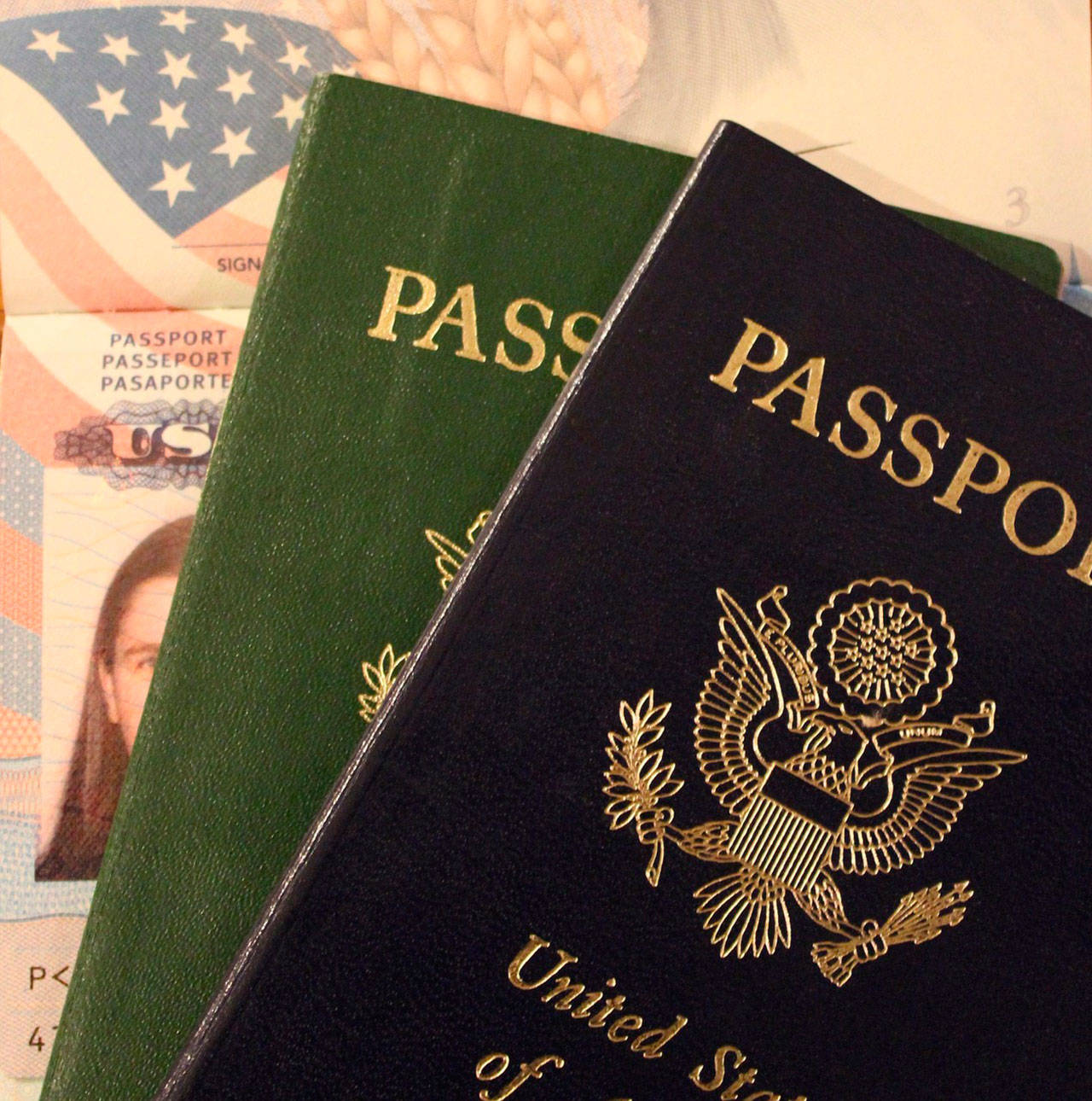Quenia attends the library’s bi-weekly U.S. citizenship class to someday have the right to vote in America.
“It’s for a better opportunity,” said Quenia, of San Juan Island, who did not want to reveal her last name.
Quenia, who is originally from Mexico, is one of the thousands who are eligible to become naturalized U.S. citizens. According to the Center for Migration Study, there were 3,919 immigrants in San Juan, Skagit and Island Counties who are qualified to become American citizens in 2015.
Eligibility includes being at least 18 years old and green card holders.
To become a U.S. citizen, candidates must complete a 20-page application and conduct a verbal interview with an immigration officer, where they will be asked 10 of a possible 100 U.S. civics and history questions. A minimum of six correct answers is needed to pass.
From 6 to 8 p.m., on Tuesday and Thursday, through Feb. 16, students learn answers to those 100 potential questions through conversations, worksheets and even flashcards with a volunteer teacher at the San Juan Island Library. Students do not need to attend each session to take the free class and childcare is available.
According to Beth Helstien, library outreach coordinator, this is the first time library staff have offered an independent U.S. citizenship class. Previously, staff taught it in conjunction with their bi-weekly English as a Second Language course. Lately, she said, interest has grown locally and about four students attend each session. According to data from U.S. Citizenship and Immigration Services, the number of naturalized citizens is rising. About 470,000 immigrants were nationalized in 2016 compared to 2010.
“There is more interest in the community, possibly because of changes to federal immigration laws,” said Helstien.
These changes include executive orders, signed by President Donald Trump as early as last winter, which attempts to ban citizens from mostly Muslim-practicing countries from entering America and strip local governments, whose officials are noncompliant with immigration authorities, from federal funding. They are still being debated in courts.
Locally, however, government officials have shown support for foreigners. Last summer, San Juan County Council unanimously adopted an ordinance to prevent the collection of immigration statuses. Without this information, county staff cannot share immigration statuses with federal agencies trying to deport undocumented immigrants. Even before this official adoption, the county was listed as noncompliant by U.S. Immigration and Customs Enforcement.
Instead, at the Tuesday, Nov. 21 citizenship class, attendees discussed a different time in U.S history — the Declaration of Independence. One potential test question asks to list the order’s rights, which are life, liberty and the pursuit of happiness.
“The pursuit of happiness, do you know what that means?” asked class auditor and current U.S. citizen Rob Ewers. “You have the right to try to be happy, in other words, you have the right to not have to serve the state, but to go after your passions.”
For Quenia, that means becoming an American.“It’s important,” she said.
Can you be a U.S. citizen?
Applicants who answer six out of 10 U.S. history and civics questions correctly, during an interview, become a naturalized American.
1. Who is in charge of the executive branch?
2. How many U.S. senators are there?
3. When is the last day you can send your federal income tax forms?
4. Who wrote the Declaration of Independence?
5. Who was the president during World War I?
6. Name one of the two longest U.S. rivers.
Answers: 1. The president 2. 100 3. April 15 4. Thomas Jefferson 5. Woodrow Wilson 6. Missouri or Mississippi



